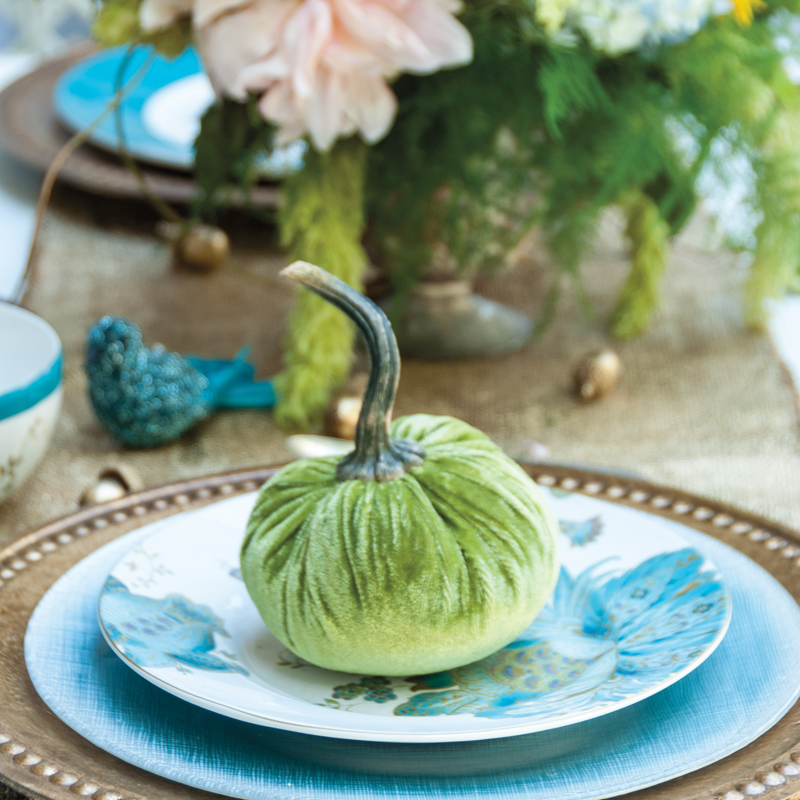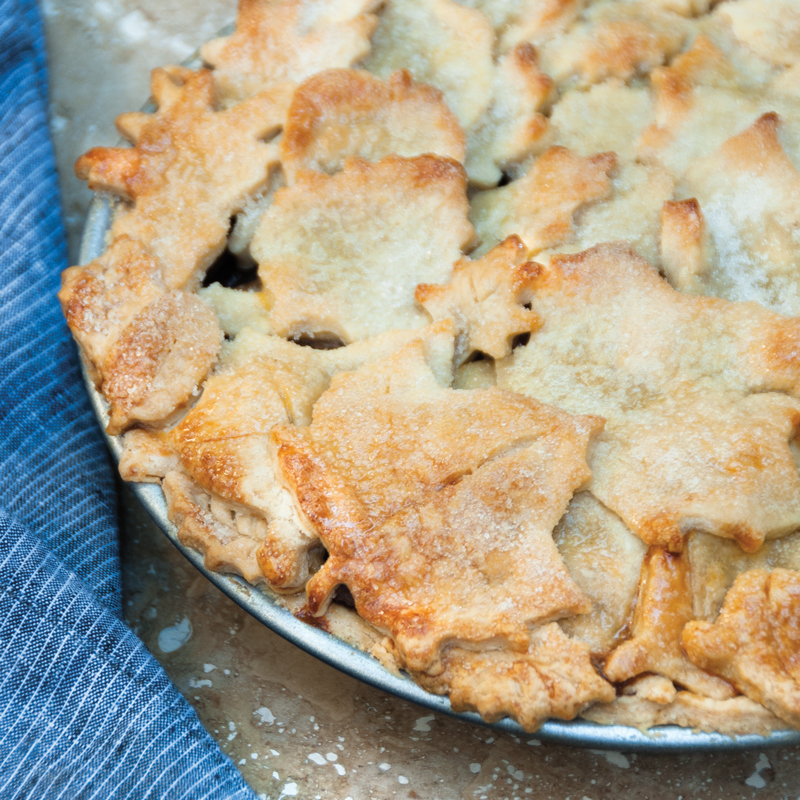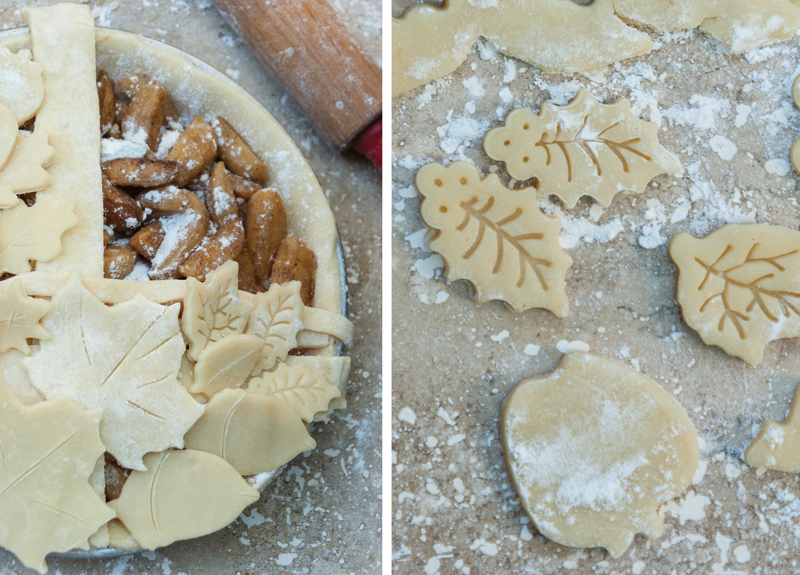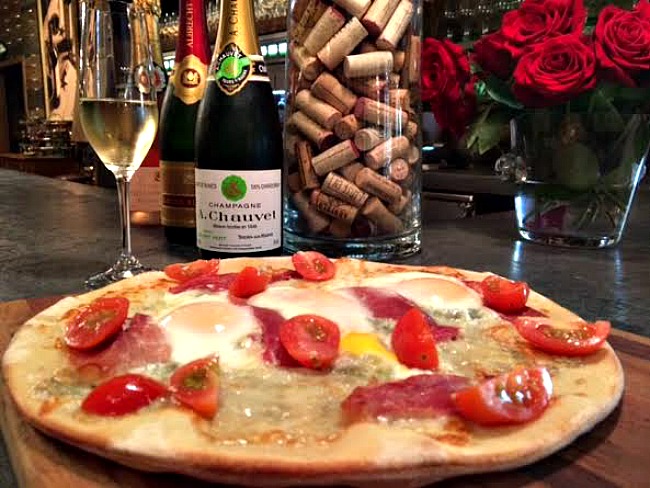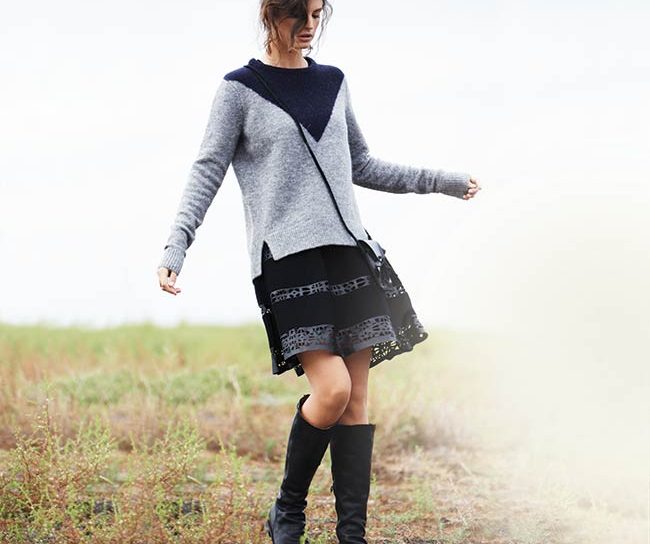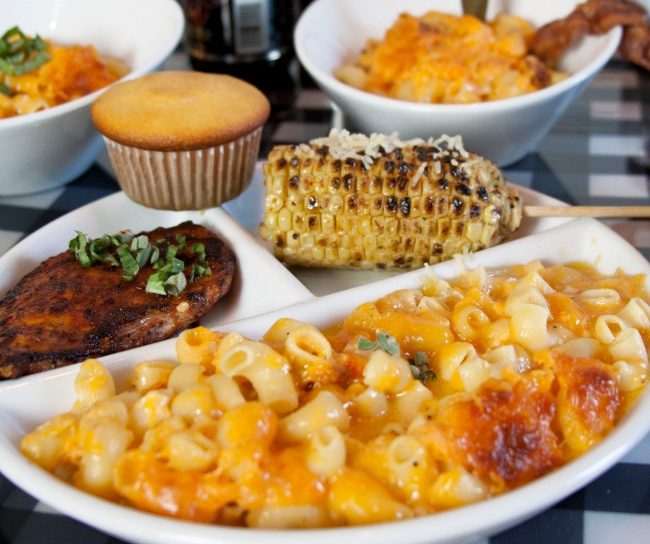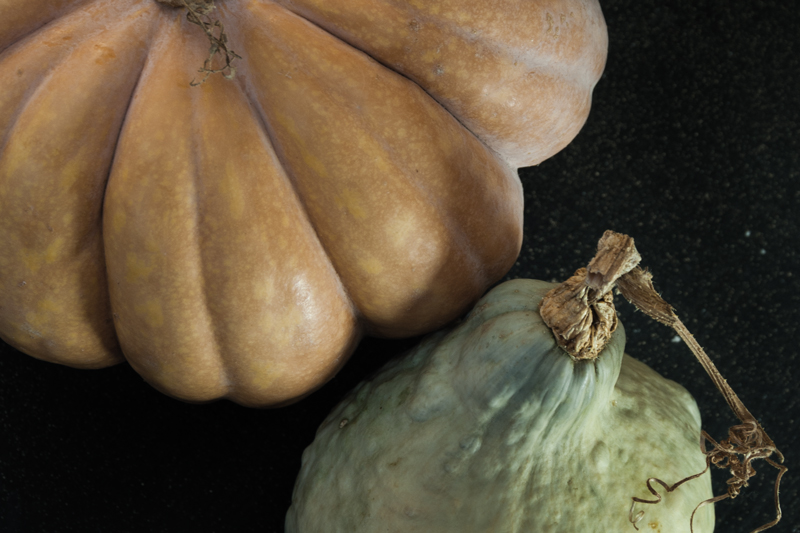
Setting a New Mood
From place settings to pies, give this year’s Thanksgiving table a glitzy west coast makeover with ideas and tips from a floral artist, a food stylist/chef and some urban farmers.
STYLED & PHOTOGRAPHED BY KARA MICKELSON
Meet the Gourds
There are more than several hundred recognized members of the Cucurbitaceae family, also referred to as gourds and squash. Cucurbitaceae are a fruit even though they’re often used as a “culinary vegetable”.
The most basic and simple breakdown of the gourd family is winter or summer and edible or inedible. The most well-known members of the family are squash and gourds (sometimes referred to interchangeably), muskmelons, watermelons, cucumbers, and pumpkins.
Summer squash are usually tender with a thin, edible skin and a shorter growing period and shelf life than their winter cousins. Popular varieties include zucchini and yellow crookneck squash.
Winter squash mostly have a thick and often inedible rind (unless pickled) and a longer growing period and shelf life. Familiar types are butternut, acorn, spaghetti, and a range of edible and decorative pumpkin.
Some squash, what we typically think of as gourds, are entirely ornamental and some are only edible when immature. Bottle gourds or calabash, when fully mature, have extremely hard exteriors.
The colorfully, shiny, warty type of gourds that make a showing during fall are also of the ornamental variety. Pumpkins tend to be both ornamental and edible, although most pumpkin pie mix is not of the typical jack-o’-lantern variety but rather a mix of winter squash.
Here are some favorites of urban farmers Andy Vaughan and Richard Untal who provided the gourds for our photo (more at califarmer.com).
Winter Squash
Barbara Butternut is an absolute favorite. The seed cavity is smaller than most butternut squashes, with a firm, bright, buttery flesh. The skin has an unusual green stripe, making it more attractive and a bit like a zucchini.
Spaghetti Squash now has a smaller “single serving size” variety that is perfect as a preportioned side dish.
Uchiki Kuri, Blue Kuri a Japanese variety of squashes, and several Hubbard varieties are long- lasting and great for pies, baking and soup.
Fairytale and Cinderella pumpkins are not only stunning when used as decor, they’re also delicious baked.
Kara’s Tips
When it comes to cooking and preparing squash, don’t forget the tender tips of the vines; usually 5 to 6 inches of many squash are edible as well as the flower, and the seeds can be roasted.
Larger squash are perfect for stuffing and make great serving bowls for displaying hot or cold food.
Table Swag — A mixture of metallic and blue accents provides a refreshing color palette. Velvet chartreuse mini pumpkins offer added interest and serve as a possible guest gift. Jenny Barker, of Magical Blooms, created the elegant arrangement using Dahlias, Hops, Clematis Pods, Astrantia, Roses, Solidago, Plumosus, Spider Amaranthus, Hydrangea, Dusty Miller, Alpine Thistle and Kermit Fiji Mums.
Pie on the Fly
A beautiful pie can be intimidating and time-consuming. Here Kara shares one of her all-time favorite recipes as well as some tips for creating a dazzling, camera-ready pie.
Save time by buying premade pie crust dough by Pillsbury. Typically in the refrigerated section, the dough comes in two log-shaped rolls. One roll can be used for the bottom and the other for show-stopping cutouts.
Tipsy Calvados Apple Pie
Ingredients
- 4 pounds assorted apples—peeled, cored and diced
- 4 tablespoons unsalted butter
- 4 tablespoons granulated or coarse brown sugar (turbinado)
- ¼ teaspoon cinnamon
- ¼ teaspoon nutmeg
- ¼ teaspoon allspice
- ¼ teaspoon ginger
- 1/8 teaspoon cardamom
- 1/8 teaspoon clove
- 1/8 teaspoon white pepper
- ¼ cup of Calvados apple brandy, or any brandy
- ¼ cup of all-purpose flour
- 1 egg yolk with 1 teaspoon water or cream for “egg wash” to secure decorative embellishments
- 1 package Pillsbury pie dough (softened per instuctions)
Pie Filling
Sauté apples in butter. Add sugar and spices and cook until apples begin to caramelize on the exterior, yet retain a semi-firm texture.
Add brandy and sauté until most of the liquid is absorbed. Reserve and cool.
Unroll one dough roll into pie pan. Trim just over the pan edge (1/8 inch) to allow for shrinkage during baking.
Add a dusting of flour and then cooled, cooked apples. Put in refrigerator or freezer to chill.
Create Pie Top
Take second log of dough, roll it out flat to 1/8 inch thickness. Make cutouts with a fall theme—leaves, apples, acorns, forest animals, etc.
With leftover dough from cutouts, roll out flat and cut into strips (thin for braids or decorative twists, medium or large for lattice; also include strips of dough to anchor cutouts).
Remove cooled pie from refrigerator or freezer. Sprinkle top of apples with flour so the moisture from the fruit does not soften the cutouts.
Assemble the dough embellishments on top.
Secure decorative pieces with egg wash. Chill pie in freezer for 30 minutes or overnight.
Bake
Remove and brush with egg wash over the entire top of pie and sprinkle with turbinado sugar.
Bake on a cookie sheet in a preheated 400° oven for 30 minutes. Reduce temp to 325° and continue to cook another 20 to 35 minutes or until crust is golden brown and filling is hot.
Kara’s Tips
• Keep dough chilled—it is easier to work with.
• Bake pies from frozen if time allows. It takes a little longer (to freeze and to bake) but the crust will hold its shape better.
• Add a course sugar like turbinado to hide imperfections and create sparkle.
• Let a hot pie rest before cutting.
• Add crème fraiche, buttermilk, vanilla seeds or a dash of whiskey to whipped cream.





